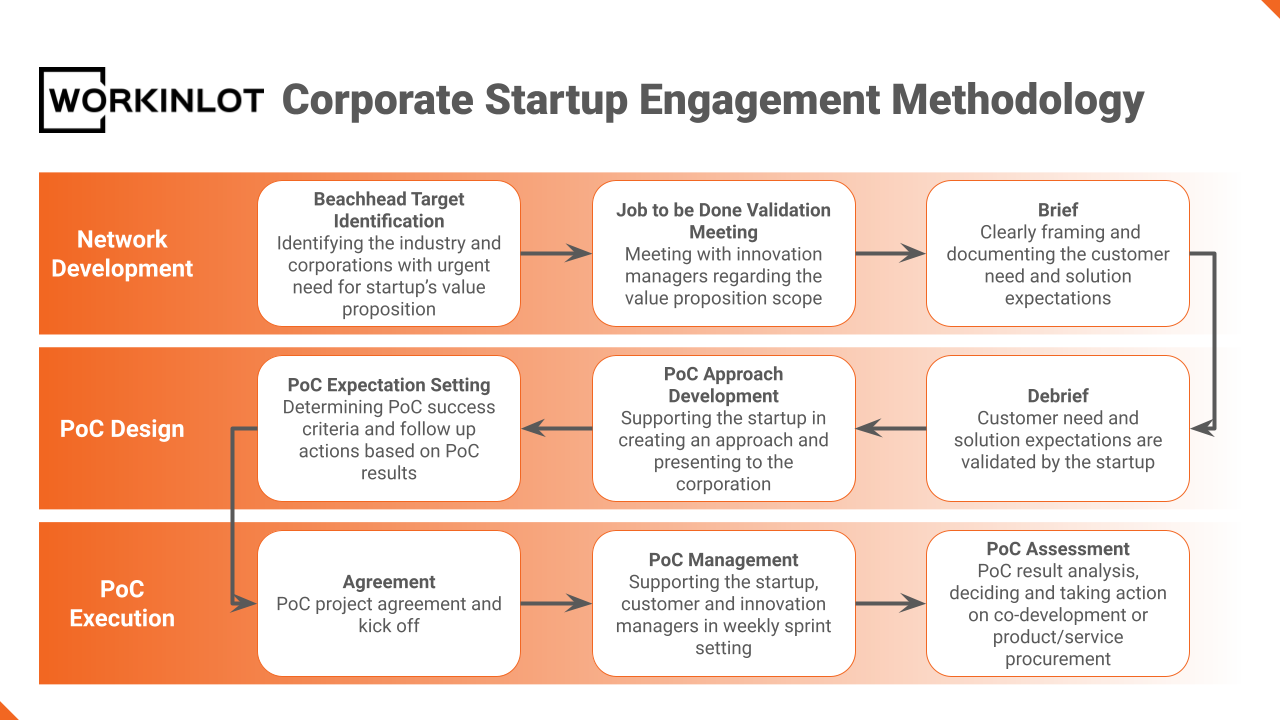
Cover photo by Engin Akyurt
Startups aim to rapidly test and scale new risk technologies and business models. In order to do so, first, the value created against the customer need has to be validated. Startups try to sequentially achieve problem-solution fit, product-market fit and scalable business model fit. In order to progress in the rate crucial for startup longevity, they need to learn and respond rapidly.
There are various activities founders can perform in order to understand and explain the stage of the startup, such as customer discovery, PoC (proof of concept) engagements, product demos and direct sales. The order and objective of each differs significantly depending on the stage.

Idea Stage
A successful startup effectively solves a problem for significantly large and growing audience. The audience can be customers or users. Idea stage is a time when the startup is tasked with research, rather than commercial achievements. The lack of commercial pressure allows the startup to learn and innovate with maximum agility.
The primary task of the startup is to fully immerse in diverse customer needs and iterate on the idea and targeted customer need in the meantime. Desktop research (industry analysis, competitive analysis, reading reports etc.) are a good starting point but never enough. The startup needs to clock many hours of field work, conducting interviews with open ended questions, observing business processes and customer research.
Success at this stage means validating that an approach can potentially solve an actual customer problem (other than the founders' problem). There are still multiple ideas at play, since the goal is not to market but iterate on a singular idea. The approach can be considered as the loosely defined initial idea, which will change along the way without a doubt as it interact with actual customers.
"Everybody has a plan until they get punched in the mouth. Mike Tyson"
Closing sales is not an objective during research. The end goal is to develop an MVP (minimum viable product) once a problem/idea pair starts to become clear and repeating. The MVP is not product, merely a service or prototype with the sole purpose of continue learning.

Problem-Solution Fit Stage
The existence of the MVP which can simulate the soluting is the most important milestone leading to the startups future success. A startup searching for problem-solution fit now has an unstructured objective to bring in some revenue and the MVP can deliver that. Not in the sense that MVP is a sellable object though. A startup at this stage frequently participates in (preferably paid) PoC engagements which can lead to sales or investments. (How PoCs Help Businesses Unlock Startup Potential)
Objective and measurable results of PoC engagements validate value creation in the eyes of the startup, corporation and possibly future customers and investors. It is absolutely imperative that the success criteria for the engagement are jointly agreed upon and documented before commencing with the engagement.If the results drive the corporations to purchase further services of the startup, problem-solution fit can considered validated for this instance.
PoC engagement also deliver the required insights to transform the MVP into an actualy product. However before investing on a more complex product, the startup needs to have performed multiple PoC engagement with the same or very similar scope.

Product-Market Fit Stage
A startup which has validated problem-solution fit now aims to develop the product and deliver it to more and more customers.
Thriving to differentiate among existing corporations or new startups that the startup actively competes, the startup needs to acquire new customers and innovate on the product faster than the rest. For innovation purposes, the startup can continue to participate in PoC engagement during this stage. However, in order to limit the high time and resource requirements of PoCs and accelerate customer acquisition, it is advised to instead focus on reaching out to corporations with similar validated problems with product demos to close sales. The demo is used to quickly validate the solution and follow up with a proposal or sales.
Achieving product-market fit can be characterized by reaching the planned penetration rate in the targeted markets.
Scale Up Stage
For a startup with PMF, the next frontier is rapidly scaling the total addressable market and repeating similar success metrics in new markets.
It is no longer logical for B2B startups to participate in PoC engagements as the time and resource requirements work against scaling efforts. At this stage, it makes more sense to optimize demo and sales activities, effectively reducing time to close and customer acquisition cost. Furthermore, the demo process is typically outsourced to customers and/or sales partners using tactics such as free tier or self-service.
One can start talking about systematic and sustainable growth in all penetrated markets.
Conclusion
Every startup and solution is unique. The metrics and milestones above are a pretty accurate generalization, but a great starting point. Considering their path is not paved yet, the work of B2B founders are to measure, learn from and act upon every action. Trying to skip steps is not possible; however, limiting time at each stage is.